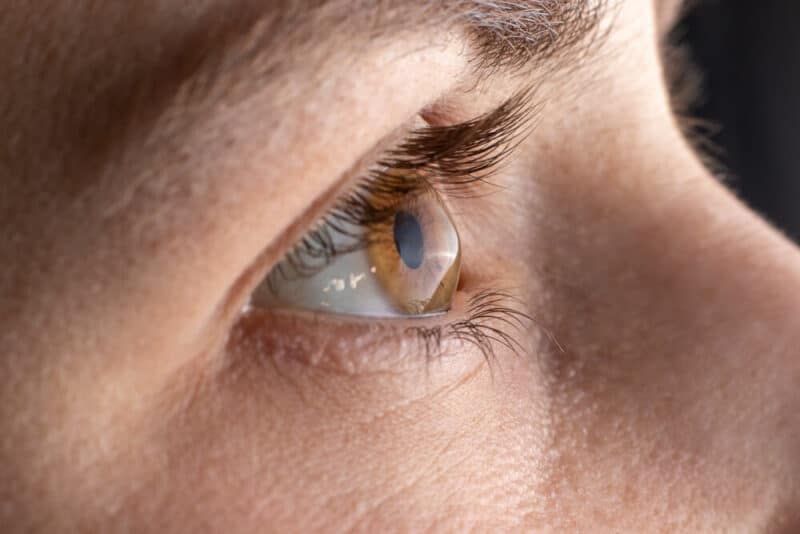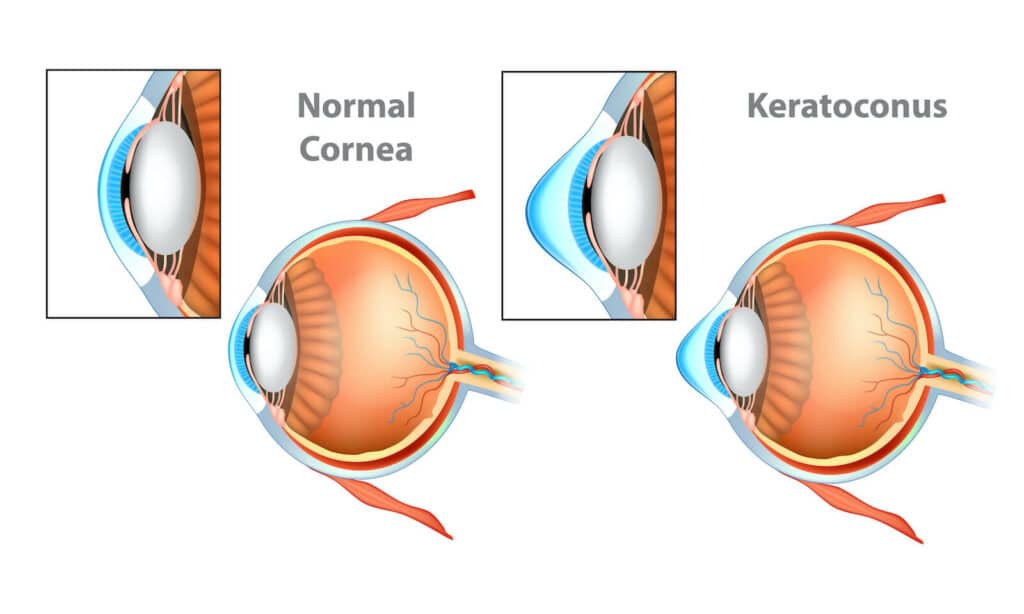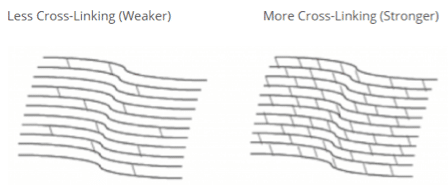Corneal Cross-linking

Did you know that your corneas can weaken and lose their shape? This phenomenon is part of a disease known as keratoconus. Also called KC, it can cause visual distortions and lead to vision loss if left untreated.
Corneal cross-linking is one of the most effective treatments for keratoconus. It strengthens the cornea, which halts the progression of KC and other diseases that weaken the cornea.
At Delta Eye Medical Group, we use corneal cross-linking to prevent vision loss caused by weak corneas. If you have KC or worry about the health of your corneas, we can help you keep them strong.
What is Keratoconus?
KC is a non-inflammatory eye disease that causes the cornea to weaken and become thinner. As this happens, the cornea is unable to maintain its natural shape and develops a cone-like bulge. This bulge causes visual irregularities and distortions.
The cornea is responsible for focusing light on your retina. If it has an irregular shape, light is not focused correctly.
When the cornea cannot effectively focus light on your retina, visual distortions and impairment occur. This makes simple tasks like reading and driving difficult.
Treating your corneas when you notice these symptoms appearing is necessary. Otherwise, you risk the perils of impaired vision and even vision loss.

What is Corneal Cross-Linking?
Corneal cross-linking, also known as collagen cross-linking or CXL, is an outpatient procedure. It gets performed in your eye doctor’s office to strengthen and stiffen your cornea.
CXL helps your cornea maintain its shape using riboflavin eye drops and ultraviolet (UV) light. The UV light and eye drops create new connections between collagen fibers in your cornea.
These new connections shorten and stiffen the existing collagen connections. Strengthening the cornea helps it maintain a healthier, more natural shape.
Stiffening the cornea using CXL halts the progression of KC, and slightly corrects the shape of your cornea in most patients. Stopping the progression of the disease prevents your eyesight from continuing to fade.

How Does Corneal Cross-Linking Work?
During a CXL treatment, your eyes get soaked in riboflavin eye drops. Your cornea absorbs the riboflavin during this soak.
Then, your surgeon uses artificial UV light to activate the riboflavin. Activating the eye drops creates new connections in your corneal collagen fibrils.
These added connections result in a stiffer, stronger cornea. A strong cornea won’t bulge and results in halted worsening of KC.
Does Insurance cover corneal Cross-Linking?
Nearly all insurance plans cover CXL. It has become one of the most effective treatments for KC and other cornea diseases. Insurance companies recognize its effectiveness and medical necessity for people with weakening corneas.

Who Should Get Corneal Cross-Linking?
If you suffer from KC and the visual impairment it creates, then CXL is right for you. KC usually affects younger people, but anyone can develop it.
Corneal cross-linking is a suitable treatment for people twelve years and older.
Do you have keratoconus, or are you concerned your corneas are weakening? Schedule an appointment at Delta Eye Medical Group in Lodi, CA, to ensure you don’t lose your vision to KC!


